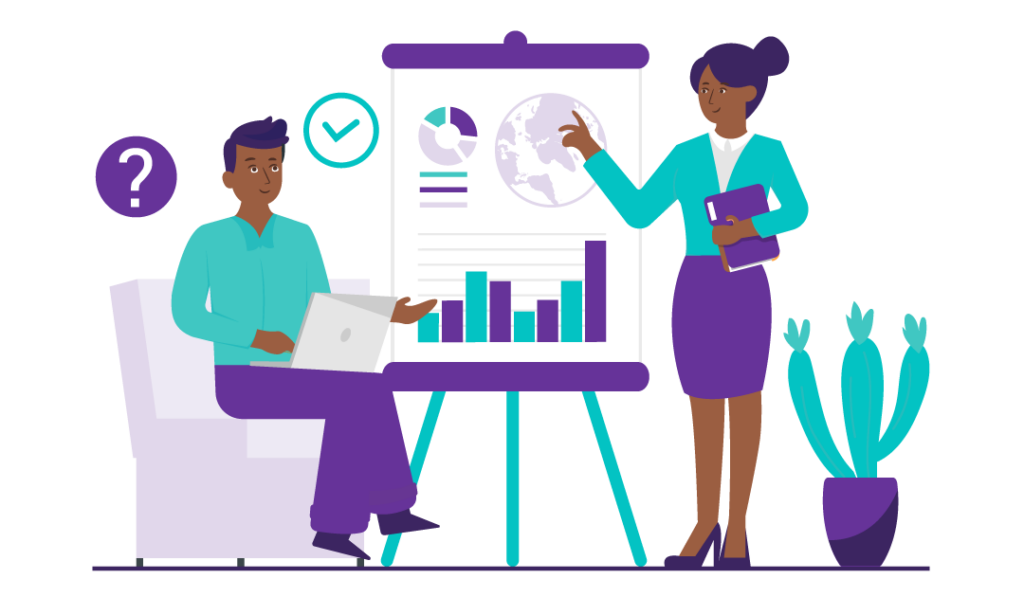Have you spent a lot of time, effort and/or money setting up your website only to be disappointed that you’re not getting the benefits you thought you would? There are a range of reasons why this might be the case but low web traffic is a likely culprit even if it’s only a part of the puzzle. Here’s what you need to know to understand the basics of low web traffic, so you can begin to rectify the issue. You can choose to read below or listen to the audio.
Topics covered
What is web traffic?
Let’s start with the basics first. Like cars driving along a highway, people roaming the internet and visiting websites is what we call website traffic.
To be more specific, when we talk about web traffic, we’re referring to the number of ‘visits’ to a website or the number of ‘sessions’. These interchangeable terms mean a single instance of a person viewing any page on the website in question.
What is low web traffic?

Now you’ve probably guessed that low web traffic refers to a low number of visits over a given time period. But what you may not realise is that ‘low’ is relative.
You see, the specific threshold value below which traffic becomes categorised as ‘low’ varies across industries and for different sized businesses. For instance, less than 10 visits per day would be considered very low web traffic for most businesses in most industries, but a business that aims to service only 1-2 high-paying clients per year in a very specific niche (such as a book ghostwriter who only writes autobiographies for top celebrities) might consider that level of traffic to be decent.
As another example, less than 50 visits at any given time that your target market could be expected to be online (so, not when they’re asleep) might be considered low for the average small business that sells fairly low-priced consumer goods. But 50 visits per hour over 10 or so hours for a business that sells high-priced consumer goods might be quite good.
For this reason, I will define low web traffic as ‘a number of website visits that’s below the level required to meet a business’s goals’.
So, if you want to generate $400 in sales per day from your website and you know that 10% of website visitors will make a purchase with the average purchase value being $40, then you need 10 people to make a purchase each day and so you need 100 people to visit your website each day. If you’re getting fewer than 10 people visiting your website each day, then you have low web traffic.
The important takeaway from this is, low web traffic can have a substantial negative impact on your sales (and other business goals).
Why low web traffic is a problem

Having a website is critical for all businesses. Even if you sell locally and you think people prefer to visit your shop in person, they’re still using your website. In fact, studies have shown, 2 out of every 3 shoppers will stop considering a business if they can’t find information about it online. Nearly half of everyday shoppers will stop considering a business if it doesn’t have a website.
Let me give you a real-life example.
My husband and I bought an interstate house 15 months before we planned to move into it (long story), so we decided to rent it out for 12 months. It didn’t have window coverings and we hadn’t lived in the area, so I asked on a local Facebook group for recommendations for someone to measure and make blinds for the house. Most of the respondents recommended a small local business that didn’t have a website. One person recommended the only local business that did have a website. I did some research about blinds, I looked at the 1 local website for information on their services and products, and I messaged the owner of the other business that was most recommended. He called me and spent 30 mins discussing my needs and what he offered.
In the end, I chose the business with the website.
True, their price was slightly cheaper. But only 1 person out of about 20 recommended them, when 16 or so recommended the other business. The owner of the other business who called me, was very professional, personable and clearly incredibly knowledgable. He was even able to tell me the supplier of the competitor’s blinds. But I didn’t choose him because I didn’t trust him. Without a website, I couldn’t see and research his products. Without a website, I only had recommendations from strangers that he was even a legitimate business. For all I knew, if I’d ordered from him, he could have taken my money and run.
Had I been living in the area, I could have gone into both shops to compare prices and products. But I wouldn’t have. I wouldn’t have wasted time investigating the brand without the website in-person when I could quickly and easily investigate the competitor. I would, however, have bought from that competitor in-store. I would still have done all my research online, but I’d have bought in-store where I could have looked at and touched the product before I made the final decision.
Had the small local business had a website, I’m fairly sure I’d have chosen them, provided their products were indeed better, as I think, based on myth research into the products he was selling, the higher upfront cost would have paid for itself in longer-lived blinds.
Hopefully that illustrates how important having a website is. It builds trust, allows prospects to research you and what you’re selling, and it can even be a place people can buy from you, though it doesn’t have to fulfil that role to be valuable.
But the thing is, there’s no point having a website if no one visits it. If no one discovers your site, it’s pretty much the same as not having a website at all.
Measuring your web traffic

You can measure your website’s traffic for free using Google Analytics — here are some instructions for setting up Google Analytics on your website. If you need a GDPR-friendly solution, or you want to protect the privacy of your audience, Simple Analytics offers cookie-free web analytics for a low monthly fee.
Both tools will let you easily measure the number of people who visit your website and the number of website visits (sessions — this isn’t necessarily the same if some people visit your site more than once). You can measure these values over various time periods depending on how you want to assess your website’s performance.
It’s often most useful to analyse your web traffic by looking at the number of unique visitors to your website in a month and the number of sessions. This will tell you how many people are visiting your site and whether they come back multiple times. You can then compare this value across multiple months to see how changes to your website affect your web traffic.
Web traffic thresholds

Now I know you’re really hoping I’ll give you a magic figure that will tell you whether you have low web traffic. Unfortunately, as I’ve said already, it really does depend on your business. Of course, saying ‘it varies’ doesn’t help you a lot if you’re trying to gauge whether your website is underperforming. So, to give you a very rough point of reference, if you’re a sole trader or small business with an average-sized target market, here are some guidelines (where the units are unique monthly visitors):
- Less than 20 = a website where it’s probably just your family and friends who visit
- Less than 100 = very low
- Less than 500 = low
- Less than 2500 = reasonable
- Less than 10 000 = you’ve got potential
Just remember that good and bad threshold values may be different for your business depending on what you sell and your target market.
Low web traffic is only a piece of the puzzle

While web traffic is important, low web traffic is only one factor that can cause websites to underperform. For instance, if your website has heaps of people visiting it but hardly anyone buys what you’re selling, then you’ll need to find out why not many people are buying. So, to discover why your website isn’t doing as well as you hoped, you’ll also want to look at metrics like:
- Bounce rate (the number of people who visit a page and then leave again without looking at any other pages)
- Session length (how long people are staying on your pages)
- Number of sales (or another metric with a similar purpose if you don’t sell directly from your website – e.g. number of calls from people viewing your website)
- Conversion rate (the number of sales vs. visits — e.g. if 1 person in every 100 visitors buys something from your site, your conversion rate is 1%)
- Number of newsletter subscribers (if you have an email newsletter)
If you break these statistics down by page rather than just looking at the data for your whole website, you’ll also be able to determine whether specific pages are performing particularly well or poorly.
What to do now
Now you know why low web traffic is a problem and how you can determine whether it’s a problem for you, here are some resources to help you fix the problem:
